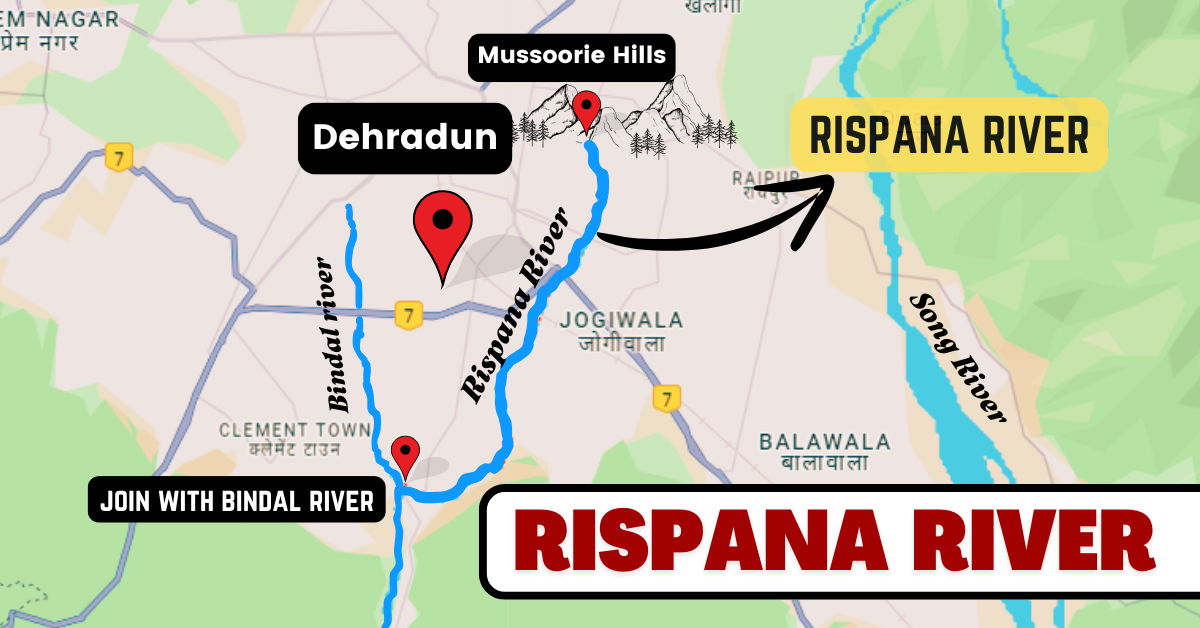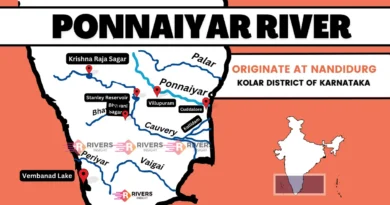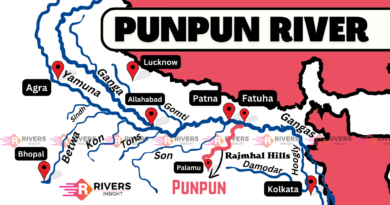Rispana River: Map of Dehradun, Uttarakhand
The Rispana River is an important watercourse flowing through the Dehradun Valley in Uttarakhand, India. It starts in the Mussoorie Hills and flows southward toward the city of Dehradun. Eventually, it merges with the Bindal River. This river has historically played a key role in supporting agriculture and providing water for the region.
The Gloni Power House, built along the river, was an important source of electricity for Mussoorie. However, the river has been facing serious challenges due to urbanization, pollution, and encroachment. As a result, conservation efforts have become essential.
Table of Contents
Origin and Course of Rispana River
The Rispana River originates in the Mussoorie Hills at an elevation of around 2,000 meters. It collects water from streams and rainfall in the region, making its way down through the forested terrain. As it travels southward, it flows through Rajpur and Bhata before reaching the city of Dehradun.
In Dehradun, the river is joined by several smaller tributaries, especially during the monsoon season, which increases its flow. The river then merges with the Bindal River, and the combined waters continue towards the Yamuna River.
Length and Catchment
The Rispana River stretches for about 27 kilometers and has a catchment area of 53 square kilometers. As a perennial river, it flows throughout the year, providing a steady water source for the regions it passes through. The river’s catchment area encompasses parts of Mussoorie, Rajpur, and Dehradun, playing a vital role in the local water supply and ecosystem.
Historical Significance of the Rispana River
The Rispana River has played a pivotal role in the historical development of Dehradun. For centuries, it has been an essential water source and a driving force behind the region’s agricultural and industrial growth. The river once hosted several traditional water mills (gharats), which were crucial for grinding grains and powering local industries.
One of its most notable historical landmarks is the Gloni Power House, built along the river. It was the first to provide electricity to the hill station of Mussoorie, marking a significant milestone in the modernization of the region.
Queen Rani Karnavati
The famous Queen Rani Karnavati of the Prithvipati Sah dynasty is credited with constructing canal systems that diverted water from the Rispana to irrigate the fertile lands of the Doon Valley. This irrigation system helped transform the valley into one of the most productive agricultural regions in Uttarakhand, fostering the growth of crops like rice, lychees, and other staple foods.
However, as Dehradun rapidly urbanized over the years, much of the river’s natural habitat has been encroached upon. The river’s role in sustaining the local community and agriculture has significantly diminished. Yet, the Rispana River remains a symbol of the region’s rich history and its cultural connection to the people of Dehradun.




